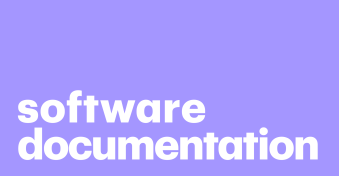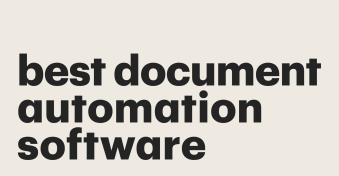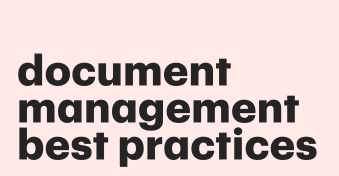Document management vs document control are often confused.
In fairness, there is a lot of overlap between the two, but they have some significant differences.
Here, we walk you through document control vs document management, the differences between them, and how you can use them to benefit your business.
Key takeaways
- Document management vs document control have several significant differences.
- Document management is all about organizing and making docs more accessible and traceable.
- Document control, on the other hand, is about ensuring document quality, security, and consistency.
- You need both document control and document management for a high-quality and efficient document system.
- The right software can be a game-changer for both.
Control vs manage: what’s the difference?
In a nutshell, document control is about ensuring the credibility and security of your documents.
Document management is more about storing, indexing, and generally organizing them.
As always, there’s a lot more to it than that, but this basic differential works well as a starting point.
What is document management?
Document management revolves around organizing your documents and document systems for efficiency and ease of use.
Things like filing, indexing, classifying, and sharing docs all fall under the document management umbrella.
Generally speaking, good management should make your document system more efficient and organized so the documents you want are easy to find and share with the right people.
Managing documents should also preserve document activity histories in ways that don’t disrupt workflows.
This can overlap with document control at points, which is one of the reasons why it’s essential for businesses to have both types of systems in place.
The primary goals of document management
The primary goals of document management are:
- To efficiently organize all document processes, from production to archiving.
- To safely store documents within an appropriate database/resource bank.
- To manage access rights so those who need to can easily access the correct documents at the right times.
- To classify documents in helpful ways.
- To make documents and their content searchable.
- To enable collaborative document exchange.
- To preserve and store legacy documents and old document versions for later referencing.
The overriding aims of this are:
- To make document processes more efficient.
- To cut costs associated with document administration.
- To maintain legal compliance.
- To make documents easier to access and use.
- To make sure only the right people can access specific documents.
Three benefits of document management
Well-managed documents have a number of benefits. Here are just a few of them.
Improved access to information
A sound management system allows people to get the information they need quickly and easily. This speeds up pretty much any process that requires the use of documents.
For example, if someone needs to find a contract template to send to a new client, good management means this will be filed in an easily accessible location. Even if the employee doesn’t know where it is, they can quickly locate it via a brief search.
They can, therefore, access the necessary template within seconds and send it out to the client immediately, speeding up the whole contract process.
Similarly, if somebody needs to check a previous version of a document to find out what (if anything) has changed, a sound management system will mean all prior versions have been archived. It’s thus easy to access old versions from here and compare these to more recent editions.
Cost-efficiency
Poor document management costs time and money.
Every moment wasted hunting through a disorganized system to find a particular document slows up workflows.
This isn’t just frustrating — it’s expensive as well.
Good document management makes all document-related workflows faster and smoother.
This saves a lot of time and, with it, money.
What’s more, good management can save on your overheads.
When you have an efficient digital document management system, you reduce the need for paper copies and physical filing.
This can save you a huge amount on stationery over the years.
PandaDoc’s efficient document management software has the statistics to back it up.
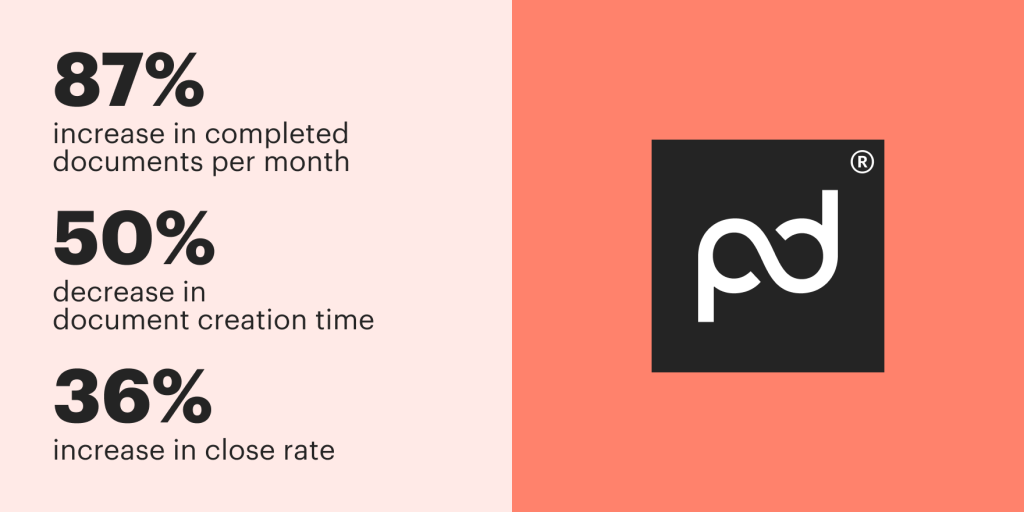
Just what any business needs.
Easier collaboration
An efficient document management system makes it a lot quicker and easier to collaborate, too.
It’s far simpler to share information securely, and audit trails allow both parties to track version histories and see where edits were made (and by whom).
When your document management software is integrated with your communications platforms, it’s also simple to flip from conversations about a document to the document itself.
This means teams can collaborate on docs in real-time rather than constantly referring back and forth between these and their correspondence.
What is document control?
So, that’s document management. Now, what is document control?
Document control is sometimes considered the more mature cousin of document management.
It’s all about holding your docs and document systems to a high standard.
Document control is concerned with protecting documents’ security, ensuring they meet compliance requirements, and supporting workflow standards.
There is some overlap between the two.
For example, controlling who can access which documents is an essential part of any document control system and a big aspect of document management.
The difference is that document managers will control access for organizational efficiency, while document controllers will do so for security and preserving document standards.
The primary goals of document control
The goals of a document control system will vary depending on the business and the documents it uses. But, as a general rule, most will have these overarching aims:
- Making sure that all documents meet quality standards.
- Monitoring document automation for quality and efficiency.
- Ensuring consistency through document templates and guidelines.
- Applying controls to documents throughout their lifespan so the correct version is used at any given time.
- Building a document identification system to make storing, indexing, and tracking documents easier.
- Using a version control system to track changes to documents.
- Controlling document distribution.
- Ensuring document security.
- Creating and applying document retention and disposal guidelines.
- Reviewing and approving documents and document processes.
- Training employees on document best practices.
Four essential elements of a document control system
To achieve its goals, a good document control system will have several essential elements. Here are some of the most important.
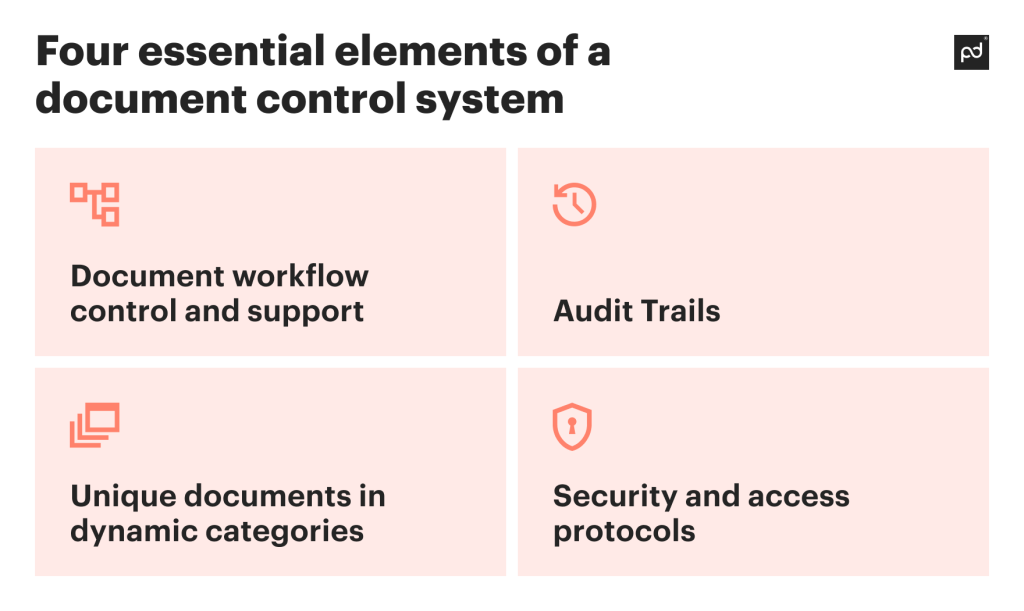
Document workflow control and support
Your document control system should be integral to all document workflows.
For example, when drawing up a contract between two parties, several versions may exist before a final format is agreed upon.
A document control system should assist this contract creation workflow by making sure all parties are working from the same master document and that older versions are saved for reference.
Document controllers may create and/or approve document templates to help with consistency here.
This ensures that everyone is (literally) working from the same page, has access to the most up-to-date information, and that previous versions can be referred back to without disrupting the workflow.
Audit trails
We’ve spoken above about preserving version histories for future reference — but the audit aspect of document control goes beyond that.
A good document control system allows people to go back through the history of each document, including when edits were made, where, and by whom.
Having a full activity history for each document helps people understand what decisions have been made about it, who was responsible, and why it’s the way it is.
Unique documents in dynamic categories
Ideally, each document should be able to ‘exist’ in several locations without duplicates.
This is possible with dynamic categories.
A document can be uploaded to several folders/categories, and any changes made to it should appear across every location where the document ‘exists.’
To make sure this doesn’t breach accessibility or security protocols, it’s vital to apply careful controls to each document and to monitor dynamic categories carefully.
Security and access protocols
A big part of document control is protecting sensitive documents.
This means creating strict guidelines regarding where documents are stored, monitoring and implementing security measures to protect document storage, and controlling who can access what.
Access controls could be as simple as making every document an ‘opt-in’ (i.e., document owners have to manually add new user permissions for anyone allowed to access the document).
However, you might need to develop a more complex system for easy sharing.
Usually, access control and security are something your document controllers will need to work on with document management.
A collaborative effort can bring great results.
Document control vs document management: which is more important?
Both document control and management have important functions.
Neither is more essential, but they perform better in different situations and purposes.
Let’s say you want to organize your document processes and make information more easily accessible. Investing in good management software will be better than bringing in tighter controls.
Enterprise Document Management is one example of this.
Similarly, if your document versions are flying out of control and you want to ensure everyone is working consistently from the same one, improving your document control is the better way forward.
You ideally need to implement both types of systems to get the very best results from your document systems and processes.
Why do you need both document control and document management?
So, why do you need both document control and management systems?
Can’t one system do it all?
Well, for a start, document control and management have different aims and goals.
While there are similarities and some overlap (e.g., both are important for making documents accessible, safe, high quality, and useable), the differences between their goals mean your document systems and processes won’t work as well as they should if you only use one.
Let’s say, for example, that you bring in a fantastic management system but don’t implement document controls.
You’ll find your files well organized and easy to share, but you may struggle with things like different versions of documents going around, resulting in editing conflicts, a lack of consistency, or even security breaches.
On the other hand, if you bring in document controls without proper management, you might find it hard to share docs collaboratively when you need to, and finding the correct documents when you require them could become a very laborious process.
Can a company use both document control and document management systems?
A company can easily use both document control and document management systems, especially with the right software.
It’s a good idea to create document management and control strategies and assign each responsibility to specific people and teams.
This doesn’t have to be difficult for your employees.
Software like PandaDoc can automate many document management and control processes, including workflow creation and database organization.
Streamline all your document workflows with PandaDoc’s user-friendly software
PandaDoc’s user-friendly solution is perfect for all your document needs.
With PandaDoc, you can streamline workflows, automate management and control processes, and be completely confident in your document security.
Why not book a demo to find out what we can do for you?
Frequently asked questions
-
Document control has a nominally larger scope than management, as it concerns high-tier security and quality. That said, document control is much more challenging without good management, and good management plays a big part in effective control.
-
Document control and document management work best together. There is considerable overlap between the two, but they also complement one another in important ways.
You gain streamlined, secure, and efficient document processes by integrating document control with document management. Collaborative document sharing becomes simple and safe, and finding docs and tracking their version histories is quick and easy.
-
Document control aims to preserve activity histories within documents while simultaneously making sure that only one version of the document is active.
For example, if a team draws up a contract, a sound control system will track activity and create a trail that can be scrolled back through so everyone can see what’s been done, when, and by whom. At the same time, it will make sure everyone is working from the most up-to-date version of the document.
-
Document control is an important part of compliance. It helps with everything from audits to creating compliant and consistent document templates.
-
Good document management is a real asset for compliance. It enables businesses to quickly find necessary documents for audits and other legal purposes. It also plays a big part in data protection and record-keeping.
-
The right software can automate many document control aspects, making it much easier and safer. PandaDoc has document control solutions integrated with management processes for a fully comprehensive and secure document system.
-
PandaDoc makes document management easier and more efficient than ever. With it, you can seamlessly integrate management and control processes for a secure, efficient, user-friendly, and compliant document system.
Disclaimer
PandaDoc is not a law firm, or a substitute for an attorney or law firm. This page is not intended to and does not provide legal advice. Should you have legal questions on the validity of e-signatures or digital signatures and the enforceability thereof, please consult with an attorney or law firm. Use of PandaDoc services are governed by our Terms of Use and Privacy Policy.
